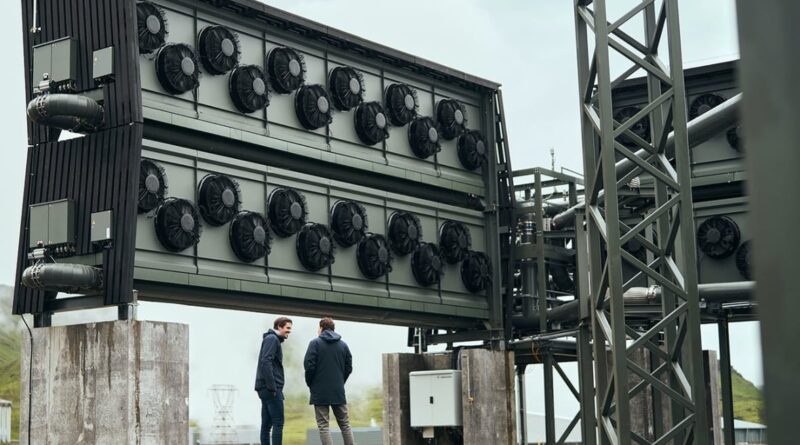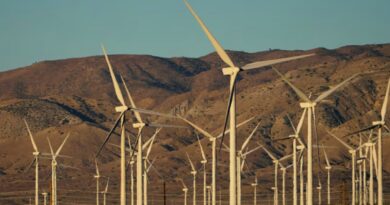How effective a climate solution is removing CO2 from the atmosphere?
When Alex Tavasoli came across a patent filed in Wisconsin that used carbon dioxide to cure cement—essentially capturing and storing CO2—she was surprised to learn that it was from 1874.
“It wasn’t for the sake of climate change that they were inventing these technologies,” said Tavasoli, an associate professor and head of the Laboratory of Future Industry research group at the University of British Columbia.
She says technologies like this didn’t catch on in the 19th century because they weren’t economically viable. But she thinks the warming climate could change that.
There are many different ways to remove carbon dioxide from the atmosphere, but “what you want is something additional to what nature’s already doing,” said David Ho, a professor at the University of Hawaii at Manoa and co-founder of [C]Worthy, a nonprofit that works on verifying ocean-based carbon dioxide removal.
A forest ecosystem naturally removes CO2 from the atmosphere, but experts like Ho are looking for technological solutions to take it further. (These technologies are distinct from carbon capture utilization and storage, which grabs CO2 at the source, like a smokestack of a factory, and puts it to another use.)
He said the effectiveness of CO2 removal technologies in combating climate change depends a lot on how much greenhouse gas pollution the world is pumping into the atmosphere. He compares it to a time machine.
The world’s largest direct air capture demonstration plant, Climeworks’ Orca in Iceland (see photo above), removes 4,000 tonnes of carbon dioxide from the atmosphere over the course of a year. By current emissions levels, “that takes us back three seconds… that’s the atmosphere you had three seconds ago if you had 4,000 metric tons less CO2,” said Ho.
For carbon dioxide removal to become an effective time machine—that is, to remove emissions from past decades rather than offsetting new emissions—countries need to “decarbonize everything that’s possible,” said Ho.
His work focuses on ocean alkalinity enhancement. Dissolved carbon in the ocean is always in equilibrium with the air, but by adding certain chemicals to the ocean, dissolved carbon changes form, allowing more CO2 from the atmosphere to be dissolved. (Plans to test this out in the ocean have been met with controversy in places like the U.K.)
Verifying the amount of CO2 extracted from the atmosphere, evaluating the impact on ecosystems, and considering how much land any given approach uses are things Ho wants to see more heavily researched.
In Canada, some are eyeing carbon dioxide removal as a potential industry.
“It’s an entirely new sector that… needs to be built in response to climate change,” said Na’im Merchant, executive director of Carbon Removal Canada, a project launched by the Clean Prosperity Foundation.
In a report co-authored by Merchant, Carbon Removal Canada estimates that building out and operating direct air capture facilities in Canada could create 89,000 permanent jobs by 2050. According to a 2022 report from the International Energy Agency, Carbon Engineering in Squamish, B.C., is Canada’s only operational demonstration plant.
The federal government is including direct air capture in a forthcoming investment tax credit, covering 60 percent of capital costs on new facilities. Merchant thinks “that’s going to be attractive to a lot of companies that are interested in starting direct air capture projects in Canada, especially in Western Canada,” where there’s supportive regulation, a skilled workforce, and geologic formations to store captured CO2.
Carbon Removal Canada wants the federal government to come up with a national challenge for carbon dioxide removal projects, awarding grants to innovative projects. The group is also advocating for carbon dioxide removal to be included as a way for polluters to comply with the carbon tax.
Alex Tavasoli’s UBC research group will be exploring uses for captured CO2 and waste, as well as ways communities can finance and use these systems. She sees a different way for carbon dioxide removal to be put to use within cities, where there is a higher concentration of CO2 than in less dense areas. For example, highway tunnels collect exhaust from cars.
“By looking for those pockets where the CO2 concentration is elevated, we could potentially design systems that use less energy and therefore cost less money to capture that carbon dioxide,” said Tavasoli.
Source : cbc.ca




